After you’ve played role playing games for a while, and especially if you play Dungeons & Dragons, you can get a little tired of how monster encounters tend to play out the same way.
‘Roll for initiative’, roll to attack the monsters over and over until they’re dead. That’s great fun for the first few times when you’re learning how combat works but it gets old quickly.
In old school D&D and in most modern OSR games one of the elements of the game that change this typical process is the Monster/NPC reaction tables.
You roll 2d6 to work out what a monster or an NPC does when you first encounter it. Here’s the Monster reaction table from the very first role playing game I played the Moldvay/Cook Dungeons and Dragons Basic rulebook…
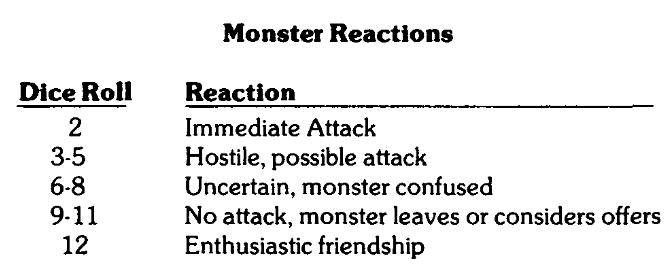
There’s a 72% chance of rolling 6 or higher on a 2d6 so using this monster reaction you’re statistically more likely to have a roleplaying encounter than a combat encounter with a monster…at least to begin with.
There’s a 28% chance of rolling 9 or higher, so playing D&D Basic as written, over a quarter of monster encounters would result in no combat at all. Unless you rushed in and attacked immediately of course which is what most of us did back in 1982.
The problem with fighting every monster is you miss out on the wide range of possibilities you can get from an encounter.
One of the key elements you want in a dungeon is someone to talk to, for example. Gathering useful information can help to keep you alive. The terrified goblin who tells you to watch out for the troll hiding in the deep pit with the rope bridge over it and how to avoid that troll altogether can be huge when you’re a level 1 party.
This style of play, where you avoid head-to-head confrontations with powerful enemies is characteristic of Old School Renaissance (OSR) style RPGs.
In the great modern OSR game Knave 2e, Ben Milton expands the reaction table so that each number on the 2d6 roll gives you a different reaction…

I think this is a huge improvement over the original reaction table introducing more fun with a 2d6 roll. Having monsters or NPCs follow or observe the party could be creepy fun!
You could also make a custom reaction table for each dungeon or location you create so it feeds into that dungeon’s microcosm and major villain.
In a necromancer’s lair all the NPCs and monsters there might be tasked with bringing the necromancer more bodies or body parts. In a dragon’s lair the dragons minions might all be looking for gold to please their master.
In a goblin’s lair most of the goblins might default to stealing something and running, and all their strategies, traps, and improvised weapons might be designed to help them do that.
It’s quite easy to create a 2d6 table that supports a theme like this in a particular dungeon or location.
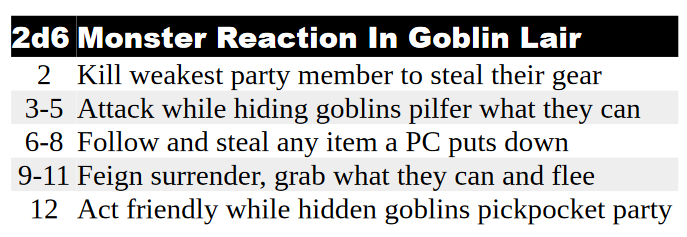
In Ironsworn Delve Shawn Tompkin includes a character disposition table for NPCs that you could also use for monsters…

I played around with using a full d100 table for NPC reactions that combines the reaction with their personality. A big d100 table like this makes for some unusual and interesting interactions…
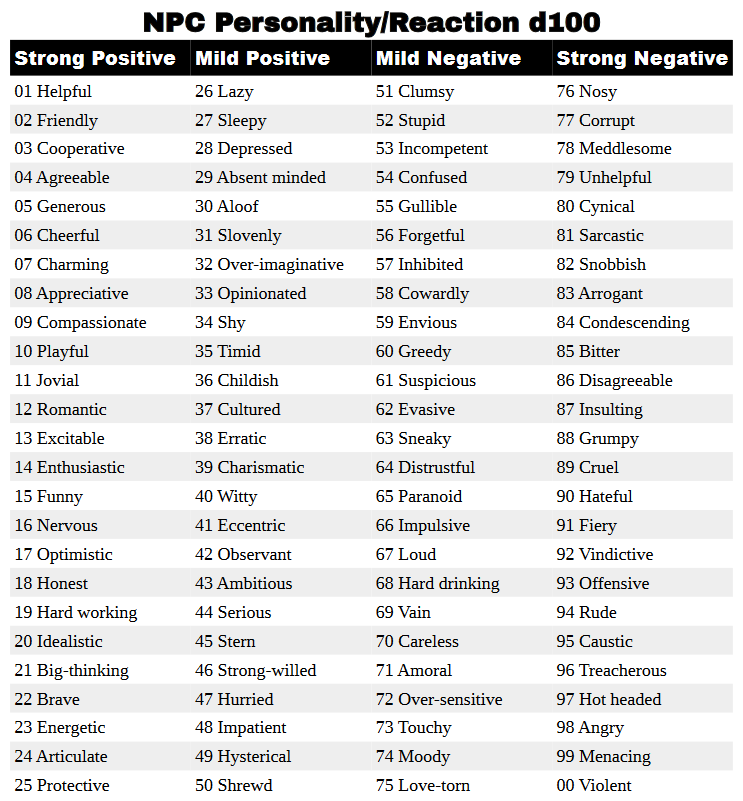
You could use the same table for humanoid monsters or any monsters that have human-like personalities.
For the reactions of beast-like or formidable monsters you could use a table like this…
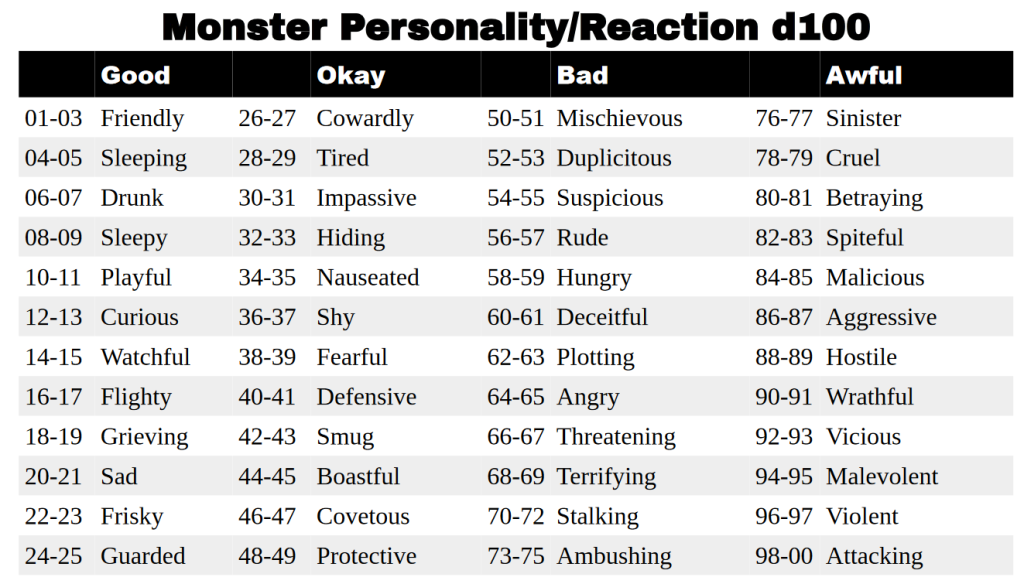
If you’d like a copy of these two tables they are Creative Commons by attribution so you can use them in your own products if you choose to. You can download the tables free here…
NPC d100 Personality/Reaction Table
These can all be fun. What can add a lot more depth though, is if you include a monster or NPC’s name, role or trade, motivation or secret and quirk, in its stats.
I talk about creating these in this post 7 Secrets To Great Encounter Tables.
This takes just a few more words or you can roll for them randomly during play. A monster or NPCs motivation or secret in particular can have a profound effect on how they react to a party.
When you know what motivates an NPC or monster or what secret it’s keeping you can reward players for good roleplaying in finding out and using those motivations or secrets as leverage in the encounter.
For encounters on the fly, reaction tables can add some magic to your game and help you break out of the endless combat cycle with every encounter.
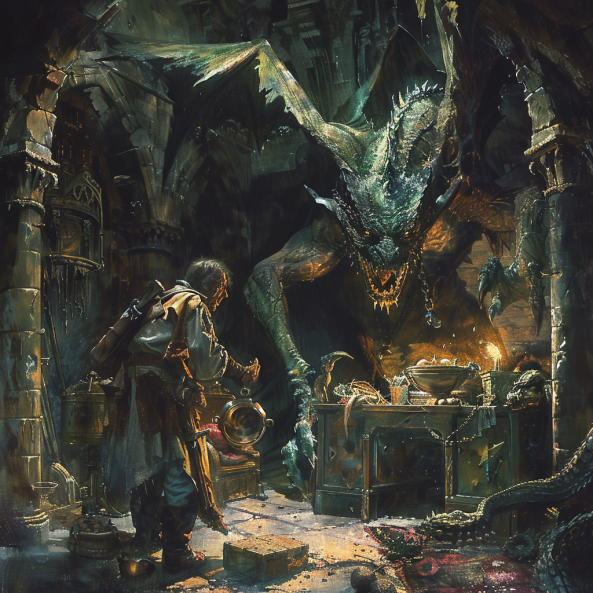
‘I know you like silver so I brought you a little gift.’
Leave a Reply